Pearl Harbor - Myouth - Ricordi degli anni '70
Menu principale:
Pearl Harbor
Modellismo > Aerei > Mitsubishi A6M3/3a Zero
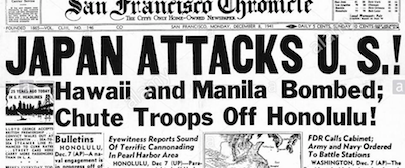
L'attacco di Pearl Harbor (nome in codice "operazione Z", ma conosciuto anche come "operazione Hawaii" o "operazione AI") fu un'operazione che ebbe luogo il 7 dicembre 1941 nella quale forze aeronavali giapponesi attaccarono la flotta e le installazioni militari statunitensi stanziate nella base navale di Pearl Harbor, nelle isole Hawaii. L'operazione fu attuata in assenza della dichiarazione di guerra da parte giapponese, che fu formalizzata soltanto ad attacco iniziato, e provocò l'ingresso nella seconda guerra mondiale degli Stati Uniti dove si sviluppò nell'opinione pubblica un forte sentimento di riprovazione e di odio verso il Giappone. Il presidente Franklin Delano Roosevelt parlò di Day of infamy (giorno dell'infamia).
L'attacco fu concepito e guidato dall'ammiraglio Isoroku Yamamoto, il quale al momento dell'attacco si trovava nella baia di Hiroshima a bordo della corazzata Nagato, con lo scopo di distruggere la flotta statunitense del Pacifico.
L'operazione fu un successo, limitato solo dal mancato affondamento
delle portaerei che al momento dell'attacco non erano in porto; in poco
più di un'ora i 350 aerei partiti dalle portaerei giapponesi inflissero
pesanti danni alla flotta del Pacifico: una corazzata saltò in aria, una
si capovolse, altre tre furono affondate; molte altre navi furono
colpite. I danni inflitti alla flotta statunitense permisero al Giappone
di ottenere momentaneamente il controllo del Pacifico ed aprirono la
strada alle successive vittorie nipponiche, prima che gli Stati Uniti
riuscissero ad allestire una flotta in grado di tenere testa a quella
giapponese.
Fonte: Wikipedia
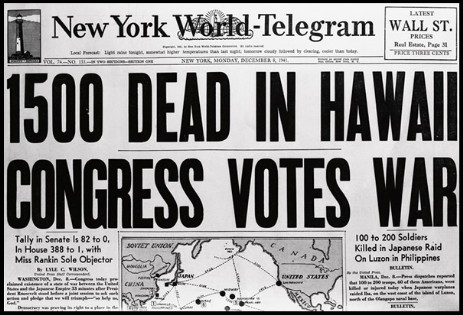
The Attack on Pearl Harbor was a surprise military strike by the Imperial Japanese Navy Air Service against the United States naval base at Pearl Harbor, Hawaii Territory, on the morning of December 7, 1941. The attack, also known as the Battle of Pearl Harbor, led to the United States' entry into World War II. The Japanese military leadership referred to the attack as the Hawaii Operation and Operation AI, and as Operation Z during its planning.
Japan intended the attack as a preventive action to keep the U.S. Pacific Fleet from interfering with its planned military actions in Southeast Asia against overseas territories of the United Kingdom, the Netherlands, and the United States. Over the course of seven hours there were coordinated Japanese attacks on the U.S.-held Philippines, Guam and Wake Island and on the British Empire in Malaya, Singapore, and Hong Kong.
The attack commenced at 7:48 a.m. Hawaiian Time (18:18 GMT). The base was attacked by 353 Imperial Japanese aircraft (including fighters, level and dive bombers, and torpedo bombers) in two waves, launched from six aircraft carriers. All eight U.S. Navy battleships were damaged, with four sunk. All but USS Arizona were later raised, and six were returned to service and went on to fight in the war. The Japanese also sank or damaged three cruisers, three destroyers, an anti-aircraft training ship, and one minelayer. One hundred eighty-eight U.S. aircraft were destroyed; 2,403 Americans were killed and 1,178 others were wounded. Important base installations such as the power station, dry dock, shipyard, maintenance, and fuel and torpedo storage facilities, as well as the submarine piers and headquarters building (also home of the intelligence section), were not attacked. Japanese losses were light: 29 aircraft and five midget submarines lost, and 64 servicemen killed. One Japanese sailor, Kazuo Sakamaki, was captured.
The surprise attack came as a profound shock to the American people and led directly to the American entry into World War II in both the Pacific and European theaters. The following day, December 8, the United States declared war on Japan, and several days later, on December 11, Germany and Italy each declared war on the U.S. The U.S. responded with a declaration of war against Germany and Italy. Domestic support for non-interventionism, which had been fading since the Fall of France in 1940, disappeared.
There were numerous historical precedents for the unannounced military action by Japan, but the lack of any formal warning, particularly while peace negotiations were still apparently ongoing, led President Franklin D. Roosevelt to proclaim December 7, 1941, "a date which will live in infamy". Because the attack happened without a declaration of war and without explicit warning, the attack on Pearl Harbor was later judged in the Tokyo Trials to be a war crime.
Fonte: Wikipedia
L'attacco a Pearl Harbor
di/by by Gregory Karpicky
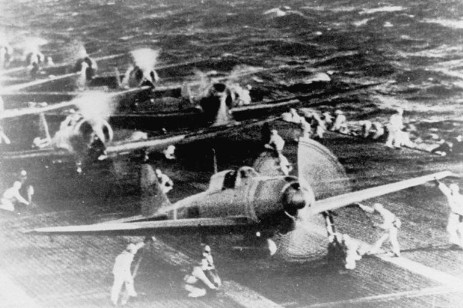
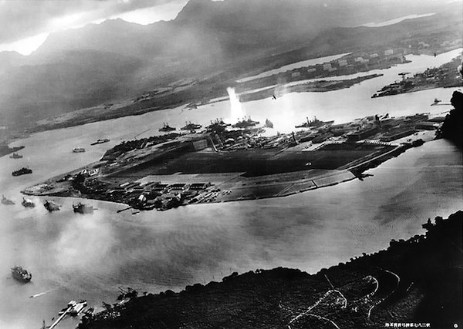
Pearl Harbor - "Totsugeskiseyo!"
di Gregory Karpicky
Copyright © 2006 Gregory Karpicky.
Scritto da Gregory Karpicky. Se avete domande o commenti su questo articolo, potete contattare Gregory Karpicky a: glkarpicky@earthlink.net.
Sull'autore:
Il mio background letterario è stato principalmente nello scrivere per varie aziende per le quali ho lavorato. Mio padre era un ufficiale dell'esercito di carriera che ha guadagnato la Legione al merito, e le esperienze che ho avuto per questo mi hanno dato un interesse per la storia militare che dura tutta la vita.
Pubblicato online: 04/15/2006.
Durante l'attacco iniziale, ventisei "Val" e diciotto "Zero" si erano separati dal gruppo principale e si erano aggirati intorno al lato ovest dell'isola. Scesero su Hickam Airfield e iniziarono a bombardare e mitragliare tutto ciò che era in vista. Una delle prime bombe ha colpito in pieno una gru e un'altra è esplosa nella mensa di una caserma, uccidendo trenta uomini all'istante. [1] Mentre gli aerei giapponesi stavano distruggendo l'aeroporto, una èattuglia di B-17 alzatisi dalla terraferma si trovò nella mischia, ignara e disarmata. Quando hanno avvistato i nemici per la prima volta, i piloti hanno pensato che l'esercito avesse mandato una scorta. Ma non appena i proiettili hanno iniziato a colpire, si sono resi conto che si trovavano in guerra. Dopo un lungo e noioso volo in mare aperto dalla terraferma, gli equipaggi erano stanchi. Inoltre i grandi bombardieri non potevano competere con gli agili "Zero", specialmente se erano nelle mani di piloti esperti e addestrati. E' stata unicamente una combinazione di abilità di pilotaggio, resistenza dei velivoli e pura fortuna che ha permesso a tutti e dodici i bombardieri Boeing di atterrare in sicurezza, benchè uno abbia dovuto atterrare su un campo da golf. Dopo aver terminato il loro lavoro sulla costa orienrale dell'isola, gli aerei si diressero a nord verso il punto di rendez-vous.
Al momento del segnale di Fuchida di "Totsugeskiseyo", che segnalava che era stato effettuato un attacco di successo, la seconda ondata di Shimazaki era a circa 90 miglia nautiche da Oahu. Entro le 08:50 avevano raggiunto Pearl e iniziato il loro dispiegamento, pronti a finire il compito iniziato la prima ondata. Saburo Shindo di AKAGI, che era già stato in battaglia in Cina, era responsabile della copertura della seconda ondata. I suoi caccia volavano a 6500 metri sopra la quota dei bombardieri, gli occhi di ogni pilota alla ricerca d qualsiasi segno della reazione di una americana inferocita. Il comando di tutta la seconda ondata era affidato al tenente Comdr. Shigekazu Shimazaki. I suoi bombardieri volavano a intervalli sfalsati sotto la copertura dei caccia. Alle 09:00, gli aerei si avvicinarono all'area di combattimento. "Il fuoco antiaereo era così denso che avresti quasi potuto camminarci sopra", dichiarò il tenente Fujita. "Il mio unico pensiero era di fare un buon lavoro e sperare che Dio mi facesse sopravvivere." [2] Fujita si rese conto che i giapponesi avevano la supremazia aerea totale, quindi si concentrò sul bombardamento delle installazioni a terra. Ha guidato il suo gruppo di caccia Zero verso la base aerea di Kaneohe.
Kaneohe non aveva batterie antiaeree, ma erano stati schierati fucili e mitragliatrici, che gli uomini usavano per ottenere la miglior difesa possibile. Un uomo è stato osservato mentre sparava un BAR, "usando la spalla di uno commilitone come appoggio per l'arma". [3]
Mentre lo Zero di Iida volava vicino all'armeria di Kaneohe, un marinaio di nome Sands sparò una raffica di colpi con la sua mitragliatrice, esclamando: "... giuro di aver colpito quel bastardo giallo!" Sands ha afferrato una BAR fresca e ha svuotato il caricatore contro il caccia mentre si girava per affrontarlo. Il proiettile di Iida ha perforato il muro dietro a Sands. Poi Iida notò un sottile flusso di benzina che spruzzava dalla sua ala. Forse ricordando un'esortazione fatta ai suoi uomini qualla mattina, quando aveva dichiarato che avebbe preferito schiantarsi contro un bersaglio nemico piuttosto che effettuare un atterraggio di emergenza, Fujita lo vide guardarlo e poi indicare verso terra, avvisando che stava per precipitare. Quindi segnalò al gruppo di sciogliersi. Durante questa ultima picchiata, Iida ha perso il controllo del suo Zero e il suo aereo si è schiantato su una strada, "sfasciato e adagiato contro il terrapieno sul lato opposto ..." Fujita osservò con orrore Iida precipitare. In seguito ha riferito che il suo amico si è "schiantato su un hangar in fiamme sulla base aerea di Kaneohe".
L'attacco a Kaneohe è stato un vero successo per i giapponesi. Hanno perso due Zero, e si è visto che molti "perdevano benzina". In cambio avevano distrutto ventisette PBY e ne avevano danneggiati altri sei. Solo tre PBY in volo di pattuglia quella mattina sono rimasti intatti.
Fujita intendeva guidare i suoi caccia verso il campo di Wheeler per vendicare la morte di Iida, ma il suo gruppo non arrivò mai. Mentre attraversavano l'isola, Fujita sentì sparare dietro e sopra di lui. Diversi caccia americani stavano attaccando. Erano un pugno di piloti americani di Haleiwa che erano riusciti ad alzarsi in volo durante la seconda ondata. Guidato dai teneenti Welch e Taylor, questo gruppo contava tra sei e nove aerei da ricognizione P-40. Taylor e Welch erano decollati da Haleiwa alle 08:20 ed avevano finalmente trovato la loro via per Ewa Field. Lì, Taylor abbatté un Val su Ewa e un altro mentre volava verso il mare. Sono poi volati a Wheeler per riarmarsi. [4] Nel frattempo un altro P-40 americano ha ingaggiato un Zero giapponese in un combattimento ravvicinato su un campo di ananas a Wahiawa. Lo Zero era sia veloce che agile e colpiva ripetutamente l'aereo americano. Ma con grande gioia degli americani che guardavano da terra, il pilota ha tenuto duro e abbattuto il suo avversario giapponese. Quando la seconda ondata si scatenò su Wheeler, i tenenti Welch e Taylor armarono nuovamente i loro P-40. Gli equipaggi che caricavano gli aerei corsero prontamente al riparo, ma i piloti decollarono sparpagliando scatole di munizioni e bossoli. Da quel momento in poi "le cose sono diventate un po 'confuse ..." ammise Taylor. Hanno abbattuto alcuni aerei giapponesi su Wheeler, "uno sulla coda del tenente Taylor." Poi andarono a Ewa Field per dare una mano ai Marines. "in quel momento c'era tutta una serie di aerei che sembravano essere persi nel traffico", ha raccontato Taylor. I due indistruttibili americani abbatterono almeno altri due giapponesi prima di tornare a Wheeler. Ri-armando sono decollati e sono tornati ad Ewa, perlustrando i cieli per quarantacinque minuti prima di rendersi conto che non ci sarebbe stata "nessuna nuova azione".
Il secondo attacco era durato circa un'ora e aveva ottenuto quasi il successo del primo. La principale differenza tra i due attacchi era che i difensori americani erano in allerta con le armi pronte e le munizioni caricate quando arrivò la seconda ondata. Un numero maggiore di aerei giapponesi è stato abbattuto o danneggiato durante questo secondo attacco. I giapponesi lo avevano previsto e così avevano deciso di non utilizzare i siluri, lenti e vulnerabili. Anche così, durante la seconda ondata le cose non sono andate del tutto a loro favore e alcuni dei loro migliori piloti sono stati uccisi in azione. Le loro perdite per l'intera operazione ammontavano a nove aerei nella prima ondata e venti nella seconda.
Presto tutti gli aerei giapponesi sopravvissuti stavano volando a nord verso il punto di recupero per incontrare le loro portaerei. La flotta giapponese ha iniziato le operazioni di recupero per la prima ondata di velivoli alle 10:10. I mari erano diventati molto mossi, pertanto gli atterraggi erano particolarmente difficili. Si sono verificati problemi durante gli atterraggi sui ponti e diversi aerei danneggiati hanno dovuto essere spinti fuori bordo. Inoltre, i ritardi avevano fatto sì che alcuni aerei fossero a corto di carburante. Anche così, l'operazione di recuperoè stata completata entro le 10:47.
Note:
[1]. At Dawn We Slept; Gordon W. Prange, p. 521.
[2]. 7 dicembre 1941, di Gordon W. Prange, p.281.
[3]. 7 dicembre 1941, Letter from Curylo, 3 marzo 1964.
[4]. Osprey Publishing; Essential Pearl Harbor Interactive Military History.
- - - Copyright © 2006 Gregory Karpicky.
Scritto da Gregory Karpicky. Se avete domande o commenti su questo articolo, potete contattare Gregory Karpicky a: glkarpicky@earthlink.net.
Sull'autore:
Il mio background letterario è stato principalmente nello scrivere per varie aziende per le quali ho lavorato. Mio padre era un ufficiale dell'esercito di carriera che ha guadagnato la Legione al merito, e le esperienze che ho avuto per questo mi hanno dato un interesse per la storia militare che dura tutta la vita.
Pubblicato online: 04/15/2006.
- Credits: Military History online -
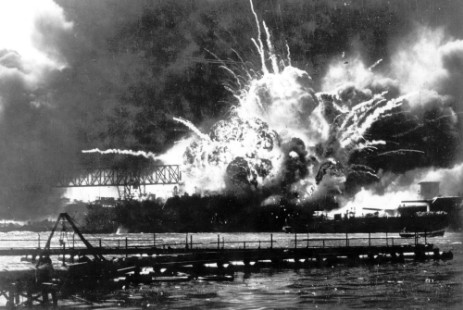
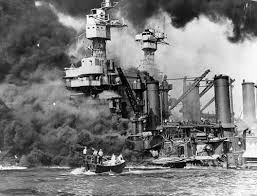
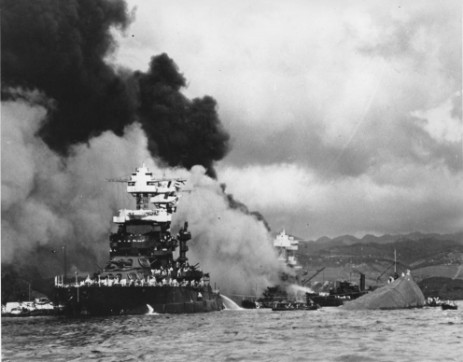
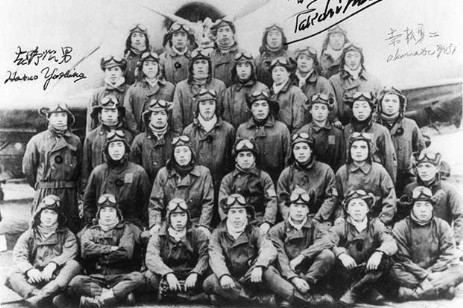
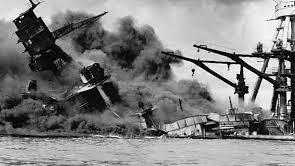
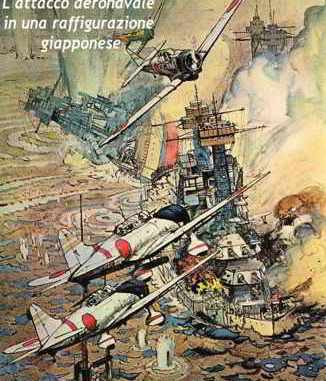
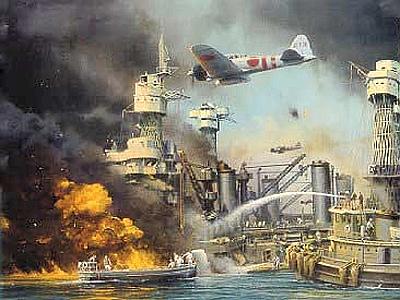
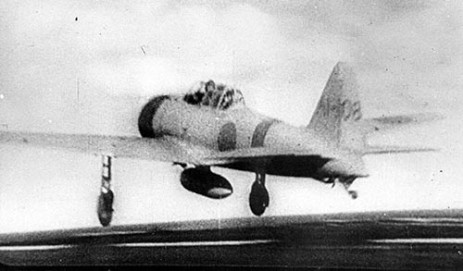
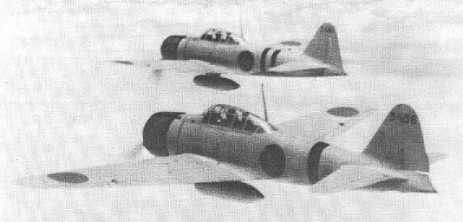
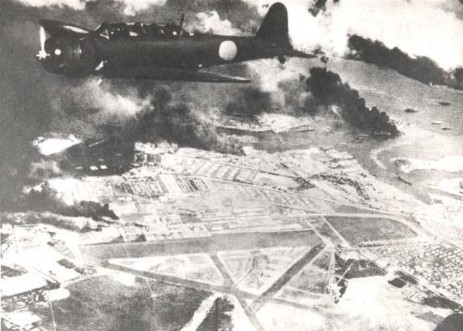
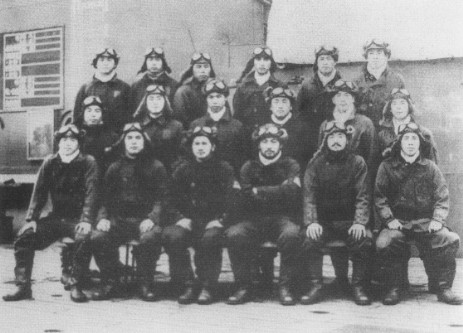
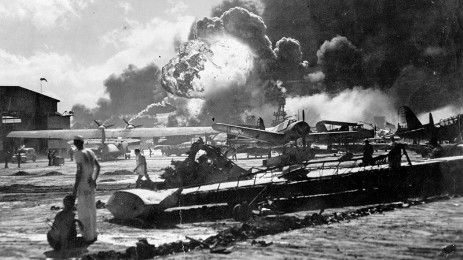
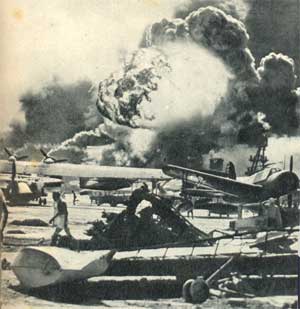
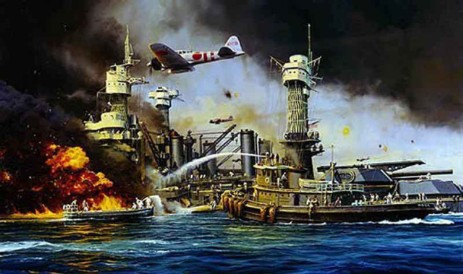
Pearl Harbor - "Totsugeskiseyo!"
by Gregory Karpicky
During the initial attack, twenty-six "Vals" and eighteen "Zeros" had separated from the main body and looped around the westward side of the island. They descended on Hickam Airfield and began bombing and strafing everything in sight. One of the first bombs scored a direct hit on a hanger and another detonated in the mess hall in a barracks, killing thirty men instantly.[1] As the Japanese planes were tearing up the airfield, a flight of B-17's being ferried from the mainland flew into the melee, unaware and unarmed. When they first spotted the fighters the pilots thought the Army had sent up an escort. But as soon as bullets began to strike home they realized they had flown straight into a war. After a long, tedious overwater flight from the mainland, the crews were tired. Also the big bombers were no match for the nimble "Zeros", especially in the hands of experienced, combat tested pilots. It was only a combination of pilot skill, aircraft toughness and just plain luck that allowed all twelve of the Boeing bombers to make it safely to the ground, although one had to land on a golf course. After finishing their work over the East End of the island, the aircraft headed back north towards the rendezvous point.
At the time of Fuchida's signal of "Totsugeskiseyo", that a successful attack had been achieved, Shimazaki's second wave was some 90 nautical miles from Oahu. By 0850 they had reached Pearl and begun their deployment, ready to finish up the task the first wave had started. Saburo Shindo of AKAGI, who had seen battle over China was in charge of the fighter cover for the second wave. He had his fighters weaving cover at 6500 meters over the dive and level bombers, each pilot's eyes peeled for any sign of what they felt were sure to be an aroused American air force. In command of the entire second wave was Lt. Comdr. Shigekazu Shimazaki. His bombers flew at staggered intervals beneath the fighter cover. At 0900, the planes approached the combat area. "AA fire was so thick in places you could almost walk on it," one Lt. Fujita declared. "My one thought was to do a good job and hope to God I got through alive."[2] Fujita realized that the Japanese had total air supremacy so he concentrated on strafing the ground installations. He led his group of Zero fighters toward Kaneohe Airbase.
Kaneohe had no antiaircraft guns to speak of but rifles and machine guns had been issued so the men there were putting up the best defense they could. At least one man was observed firing a BAR, "using a squadron-mate's shoulder for a gun rest."[3]
As Iida's Zero swept near the Kaneohe armory, a sailor named Sands got off a burst of fire from his machine gun, exclaiming, "…I swear I hit that yellow bastard!" Sands grabbed a fresh BAR and emptied the clip into the fighter as it circled to strafe him; Iida's bullet's pockmarking the wall behind Sands. Then Iida noticed a thin stream of gasoline spraying from his wing. Possibly remembering an exhortation to his men this morning, where he had stated he would rather crash into an enemy target than make and emergency landing, Fujita saw him point to himself then to the ground, indicating he was going to crash dive. He then signaled for the group to disband. During this final dive, Iida lost control of his Zero and his plane crashed into a road, "skidded across and piled up against the embankment at the opposite side…" Fujita watched Iida's plunge in horror. He later reported his friend had "crashed in the midst of a flaming hanger on Kaneohe Air Base."
The attack on Kaneohe was a bargain for the Japanese. They lost two Zeros, and several were observed to be "leaking gasoline." In return they had destroyed twenty-seven PBY's and damaged another six. Only three PBY's on patrol that morning remained intact.
Fujita intended to lead his fighters toward Wheeler field to avenge Iida's death, but his group never got there. While on their way across the island Fujita heard firing behind and above him. Several American fighters were attacking. This was a handful of American pilots from Haleiwa who managed to get aloft during the second wave. Led by Lt.'s Welch and Taylor, this group numbered between six and nine P-40 pursuit planes. Taylor and Welch had taken off from Haleiwa at 0820 and eventually found their way to Ewa Field. There, Taylor shot down one Val over Ewa and another as it flew out to sea. They then flew to Wheeler to re-arm.[4] Meanwhile another American P-40 engaged a Japanese Zero in a dogfight over a pineapple field at Wahiawa. The Zero was both fast and nimble and repeatedly peppered American plane. But to the great delight of the Americans watching on the ground, the pilot held on and downed his Japanese opponent. When the second wave broke over Wheeler, Lt.'s Welch and Taylor were re-arming their P-40's. The crews loading the planes promptly ran for shelter but the pilots took off, scattering boxes of ammunition and shell casings. From that point on "things got kind of jumbled…" Taylor admitted. They shot down some Japanese planes over Wheeler, "one right on Lieutenant Taylor's tail." Then they went on to Ewa Field to give the Marines there a hand. "At that time there was a whole string of planes looking like a traffic pattern," Taylor recounted. The two indestructible Americans shot down at least two more Japanese before returning to Wheeler. Re-arming they took off and returned to Ewa, scouring the skies for forty-five minutes before realizing there would be "no more action."
The second attack had lasted about an hour and was almost as successful as the first had been. The major difference between the two being that the American defenders were on the alert with guns ready and ammunition loaded when the second wave arrived. More Japanese planes were shot down or damaged during this second attack. The Japanese had anticipated this and so had decided to omit the use of the slow, vulnerable torpedo planes. Even so, things did not go entirely their way during the second wave and some of their best pilots were killed in action. Their losses for the entire operation amounted to nine planes in the first wave and twenty in the second.
Soon all surviving Japanese aircraft were winging their way north towards the recovery point to meet their carriers. The Japanese fleet began recovery operations for the first wave of aircraft at 1010. The seas had remained very rough so landings were particularly difficult. Problems were encountered during landings on the rolling and pitching decks and several damaged planes had to be pushed overboard. Also, delays caused some aircraft to run very low on fuel. Even so, the recovery operation was complete by 1047.
Footnotes
[1]. At Dawn We Slept ; Gordon W. Prange, p. 521.
[2]. Dec. 7, 1941 , by Gordon W. Prange, p.281.
[3]. Dec. 7, 1941 , Letter from Curylo, March 3, 1964.
[4]. Osprey Publishing ; Essential Pearl Harbor Interactive Military History.
- - -
Copyright © 2006 Gregory Karpicky.
Written by Gregory Karpicky. If you have questions or comments on this article, please contact Gregory Karpicky at: glkarpicky@earthlink.net.
About the author:
My literary background has mostly been in writing for various businesses I have consulted for. My father was a career Army officer who earned the Legion of Merit, and the exposure I received at various postings around the world with this gave me a lifelong interest military history.
Published online: 04/15/2006.
During the initial attack, twenty-six "Vals" and eighteen "Zeros" had separated from the main body and looped around the westward side of the island. They descended on Hickam Airfield and began bombing and strafing everything in sight. One of the first bombs scored a direct hit on a hanger and another detonated in the mess hall in a barracks, killing thirty men instantly.[1] As the Japanese planes were tearing up the airfield, a flight of B-17's being ferried from the mainland flew into the melee, unaware and unarmed. When they first spotted the fighters the pilots thought the Army had sent up an escort. But as soon as bullets began to strike home they realized they had flown straight into a war. After a long, tedious overwater flight from the mainland, the crews were tired. Also the big bombers were no match for the nimble "Zeros", especially in the hands of experienced, combat tested pilots. It was only a combination of pilot skill, aircraft toughness and just plain luck that allowed all twelve of the Boeing bombers to make it safely to the ground, although one had to land on a golf course. After finishing their work over the East End of the island, the aircraft headed back north towards the rendezvous point.
At the time of Fuchida's signal of "Totsugeskiseyo", that a successful attack had been achieved, Shimazaki's second wave was some 90 nautical miles from Oahu. By 0850 they had reached Pearl and begun their deployment, ready to finish up the task the first wave had started. Saburo Shindo of AKAGI, who had seen battle over China was in charge of the fighter cover for the second wave. He had his fighters weaving cover at 6500 meters over the dive and level bombers, each pilot's eyes peeled for any sign of what they felt were sure to be an aroused American air force. In command of the entire second wave was Lt. Comdr. Shigekazu Shimazaki. His bombers flew at staggered intervals beneath the fighter cover. At 0900, the planes approached the combat area. "AA fire was so thick in places you could almost walk on it," one Lt. Fujita declared. "My one thought was to do a good job and hope to God I got through alive."[2] Fujita realized that the Japanese had total air supremacy so he concentrated on strafing the ground installations. He led his group of Zero fighters toward Kaneohe Airbase.
Kaneohe had no antiaircraft guns to speak of but rifles and machine guns had been issued so the men there were putting up the best defense they could. At least one man was observed firing a BAR, "using a squadron-mate's shoulder for a gun rest."[3]
As Iida's Zero swept near the Kaneohe armory, a sailor named Sands got off a burst of fire from his machine gun, exclaiming, "…I swear I hit that yellow bastard!" Sands grabbed a fresh BAR and emptied the clip into the fighter as it circled to strafe him; Iida's bullet's pockmarking the wall behind Sands. Then Iida noticed a thin stream of gasoline spraying from his wing. Possibly remembering an exhortation to his men this morning, where he had stated he would rather crash into an enemy target than make and emergency landing, Fujita saw him point to himself then to the ground, indicating he was going to crash dive. He then signaled for the group to disband. During this final dive, Iida lost control of his Zero and his plane crashed into a road, "skidded across and piled up against the embankment at the opposite side…" Fujita watched Iida's plunge in horror. He later reported his friend had "crashed in the midst of a flaming hanger on Kaneohe Air Base."
The attack on Kaneohe was a bargain for the Japanese. They lost two Zeros, and several were observed to be "leaking gasoline." In return they had destroyed twenty-seven PBY's and damaged another six. Only three PBY's on patrol that morning remained intact.
Fujita intended to lead his fighters toward Wheeler field to avenge Iida's death, but his group never got there. While on their way across the island Fujita heard firing behind and above him. Several American fighters were attacking. This was a handful of American pilots from Haleiwa who managed to get aloft during the second wave. Led by Lt.'s Welch and Taylor, this group numbered between six and nine P-40 pursuit planes. Taylor and Welch had taken off from Haleiwa at 0820 and eventually found their way to Ewa Field. There, Taylor shot down one Val over Ewa and another as it flew out to sea. They then flew to Wheeler to re-arm.[4] Meanwhile another American P-40 engaged a Japanese Zero in a dogfight over a pineapple field at Wahiawa. The Zero was both fast and nimble and repeatedly peppered American plane. But to the great delight of the Americans watching on the ground, the pilot held on and downed his Japanese opponent. When the second wave broke over Wheeler, Lt.'s Welch and Taylor were re-arming their P-40's. The crews loading the planes promptly ran for shelter but the pilots took off, scattering boxes of ammunition and shell casings. From that point on "things got kind of jumbled…" Taylor admitted. They shot down some Japanese planes over Wheeler, "one right on Lieutenant Taylor's tail." Then they went on to Ewa Field to give the Marines there a hand. "At that time there was a whole string of planes looking like a traffic pattern," Taylor recounted. The two indestructible Americans shot down at least two more Japanese before returning to Wheeler. Re-arming they took off and returned to Ewa, scouring the skies for forty-five minutes before realizing there would be "no more action."
The second attack had lasted about an hour and was almost as successful as the first had been. The major difference between the two being that the American defenders were on the alert with guns ready and ammunition loaded when the second wave arrived. More Japanese planes were shot down or damaged during this second attack. The Japanese had anticipated this and so had decided to omit the use of the slow, vulnerable torpedo planes. Even so, things did not go entirely their way during the second wave and some of their best pilots were killed in action. Their losses for the entire operation amounted to nine planes in the first wave and twenty in the second.
Soon all surviving Japanese aircraft were winging their way north towards the recovery point to meet their carriers. The Japanese fleet began recovery operations for the first wave of aircraft at 1010. The seas had remained very rough so landings were particularly difficult. Problems were encountered during landings on the rolling and pitching decks and several damaged planes had to be pushed overboard. Also, delays caused some aircraft to run very low on fuel. Even so, the recovery operation was complete by 1047.
Footnotes
[1]. At Dawn We Slept ; Gordon W. Prange, p. 521.
[2]. Dec. 7, 1941 , by Gordon W. Prange, p.281.
[3]. Dec. 7, 1941 , Letter from Curylo, March 3, 1964.
[4]. Osprey Publishing ; Essential Pearl Harbor Interactive Military History.
- - -
Copyright © 2006 Gregory Karpicky.
Written by Gregory Karpicky. If you have questions or comments on this article, please contact Gregory Karpicky at: glkarpicky@earthlink.net.
About the author:
My literary background has mostly been in writing for various businesses I have consulted for. My father was a career Army officer who earned the Legion of Merit, and the exposure I received at various postings around the world with this gave me a lifelong interest military history.
Published online: 04/15/2006.
- Credits: Military History online -
Home Page | Modellismo | Topolini | Altri Disney | Linus | Asterix | Diabolik | Giornalini di guerra | Western | Riviste | Romanzi | Mappa generale del sito